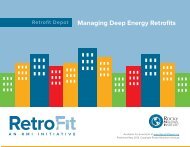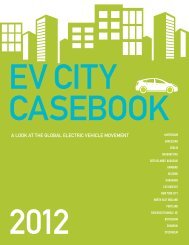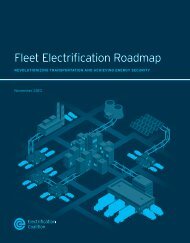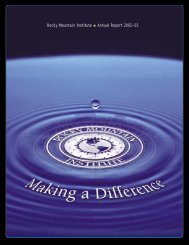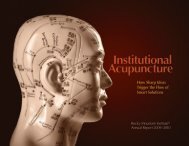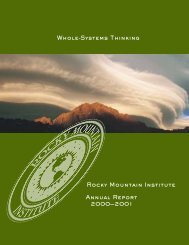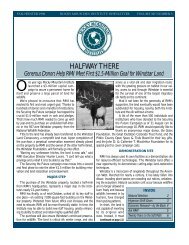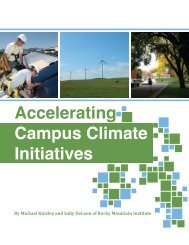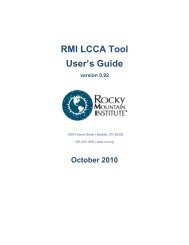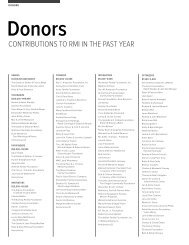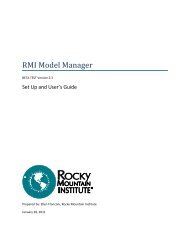Abundance by Design - Rocky Mountain Institute
Abundance by Design - Rocky Mountain Institute
Abundance by Design - Rocky Mountain Institute
- No tags were found...
You also want an ePaper? Increase the reach of your titles
YUMPU automatically turns print PDFs into web optimized ePapers that Google loves.
erature on how they do it, researchers seeking toimitate those solutions, case-studies, and successstories. The full-scale, moderated, open-sourceDatabase will also be a place where diverse and disperseddesign professionals and researchers can collaborateon practical biomimetic solutions.• In association with Health Care WithoutHarm, RMI organized and facilitated a major workshop,“<strong>Design</strong> forHealth: Summit forMassachusettsHealthcare DecisionMakers,” thatbrought togetherleaders and designersseeking to applysustainable designprinciples in newMassachusetts healthcare facilities. The symposiumheard evidence supporting “healthy design,” andexplored how to make hospitals healthier forpatients, staff, the environment and community, andfinancial stability. Favorable outcomes include lowercapital and operating costs, betterclinical outcomes forpatients, reduced risk andpotential liability, anticipatingregulatory requirements,stronger market performance,enhanced staff satisfaction,recruiting, and retention, bettercommunity relationships,demonstration of corporateresponsibility and environmentalleadership, and lower environmental impact.More direct outcomes from the Summit includewider understanding of and greater implementationof green design in healthcare facilities, both inMassachusetts and elsewhere. At least four hospitalsthat participated in the Summit have decided toapply the Green Guide for Health Care, promoted atthe Summit, to upcoming construction projects.• With staff and administrators of the BostonMuseum of Science, RMI ran a design charrette fora combined major retrofit and addition to themuseum facility. This was an unusually timelyand promising project. The Museum is housedin an aging structure, admissions have beensagging, and, like museums everywhere, theMuseum of Science must face fundamentalquestions about how to transcend theVictorian-era museum model of static displaysbehind glass. The workshop yielded a portfolioof advanced design recommendations thatcould influence museum design far beyondBoston, and could help designers to use museums’green design itself as pedagogy. The team recommendedways to make the Museum “ecologicallyneutral,” using no net energy or water and producingzero net waste; emphasize transparency anddaylight; and use renewable energy technologiesintegrated into the building’s architecture. This wasjust one of RMI’s many green design projects duringthe year, but because it draws many visitors,we think it shows promise of making a real splash.<strong>Rocky</strong> <strong>Mountain</strong> <strong>Institute</strong> Annual Report: 2004–0511




